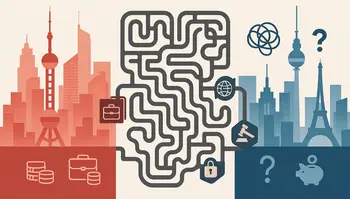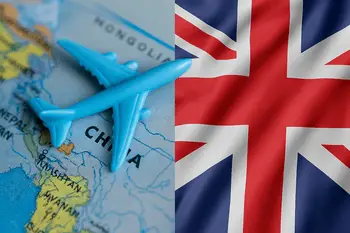
Chengdu is a relaxed, sensory-rich city where ancient temples sit beside modern shopping districts, teahouses hum with conversation, and pandas steal the spotlight.
This guide covers must-see attractions, neighborhood-by-neighborhood suggestions, food and drink, practical tips, and three sample itineraries (1-day, 3-day, 5-day).
Use it to plan a visit that balances nature, history, food, and downtime.
Why Chengdu deserves at least 2–3 days
Chengdu’s appeal is broad: iconic wildlife, one of China’s most influential cuisines, deep cultural roots in tea culture and Sichuan opera, and nearby archaeological and natural sites for day trips.
The city’s famous relaxed pace means time spent sipping tea or people-watching in a park is as authentic an experience as any museum visit.
Quick travel essentials
- Best time to visit: Spring and autumn for milder weather and lower rainfall; winter is cooler but less crowded.
- Getting there: Chengdu Shuangliu and Tianfu airports serve domestic and international routes; high-speed rail connects Chengdu to nearby provinces.
- Transport within city: Metro, buses, taxis, and plentiful ride-hail apps make moving around straightforward. Expect traffic at peak hours.
- Language: Mandarin is standard; English signs appear at major tourist sites but learn a few phrases or use translation apps.
Must-do experiences (top 10)
- See giant pandas at Chengdu Research Base of Giant Panda Breeding — Morning visits increase chances of seeing the pandas active and playful.
- Eat Sichuan cuisine — Try hotpot, mapo tofu, dan dan noodles, and street snacks like spicy rabbit head and skewers.
- Relax in a traditional teahouse — People-watch, play mahjong, or enjoy a Sichuan opera slice.
- Walk Jinli and Kuan Zhai Alleys — Historic architecture, snack stalls, and souvenir shopping.
- Watch a Sichuan opera face-changing performance — Short shows are offered at several venues.
- Visit Wuhou Shrine and Du Fu Thatched Cottage — History and literary pilgrimage sites.
- Stroll People’s Park — Experience local life, tea culture, and tai chi communities.
- Explore Taikoo Li (Chunxi Road) — Modern shopping and nightlife in the heart of Chengdu.
- Take a day trip to Leshan Giant Buddha or Mount Qingcheng — Easy by road or short train; both offer dramatic scenery and cultural depth.
- Sample suburban rural food markets and night markets — Local life and food diversity beyond tourist centers.
Neighborhood guide and what to do in each area
Jinjiang and Chunxi Road (central shopping and modern dining)
- What to do: Shop at Taikoo Li, try modern Sichuan restaurants, visit boutique cafés, and watch the city light up at night.
- Why go: A striking contrast to Chengdu’s historic districts; great for evening plans and nightlife.
Wuhou and Jinli (history and culture)
- What to do: Visit Wuhou Shrine, stroll Jinli Ancient Street for snacks and local crafts, and feel Chengdu’s historic heartbeat.
- Why go: Direct connection to Three Kingdoms history and traditional architecture.
Qingyang and Du Fu Thatched Cottage (literature and temples)
- What to do: Explore Du Fu’s cottage and museum, visit nearby temples, and relax in quieter streets.
- Why go: Du Fu’s poetry and Chengdu’s literary heritage are palpable here.
Panda Base and Northern Chengdu
- What to do: Plan a morning at the Panda Base, visit nearby research facilities, and combine with a botanical garden visit.
- Why go: The panda base is a globally recognized conservation and tourism site that rewards early visitors with active animals.
Surrounding day trips (Leshan, Emei, Mount Qingcheng)
- What to do: See the Leshan Giant Buddha, climb Mount Emei, or enjoy Daoist history and scenery at Qingcheng Mountain.
- Why go: These sites extend Chengdu’s cultural and natural offerings beyond the urban center.
Food and drink: what to order and where
- Hotpot — Experience a communal pot of spicy mala broth; pick a reputable restaurant near Chunxi Road or in Wuhou.
- Mapo tofu and dan dan noodles — Found in local restaurants and street stalls; seek places busy with locals.
- Snacks at Jinli — Try stuffed buns, tanghulu (candied fruit), and Chengdu-style cold noodles.
- Teahouses — Heming Teahouse and Longting Tea House are well-known; expect a relaxed rhythm and afternoon tea culture.
- Night markets — Sample skewers, tofu, and other Sichuan street foods in the evening; hygiene varies, so choose busy stalls.
Food safety tip
- Opt for cooked foods and bottled water if you’re sensitive to new cuisines; ask for medium spice if you want to avoid the full mala heat.
Where to stay (by traveler type)
- Luxury: Central hotels near Taikoo Li for shopping and convenience.
- Boutique: Historic lane guesthouses near Kuan Zhai Alleys for atmosphere.
- Budget: Hostels and guesthouses around People’s Park or near the metro lines.
- Family-friendly: Hotels near the Panda Base or near major parks for easy daytime plans.
Sample itineraries
1-day Chengdu itinerary (best for quick stopovers)
- Morning: Chengdu Panda Base early visit for active pandas.
- Midday: Lunch at a nearby Sichuan restaurant; try local cold dishes to acclimate to spice.
- Afternoon: Wuhou Shrine and Jinli Ancient Street for history and snacks.
- Evening: Hotpot dinner and a short Sichuan opera face-changing show.
3-day Chengdu itinerary (balanced culture, food, nature)
Day 1: Panda Base in the morning; People’s Park and teahouse in the afternoon; Chunxi Road for dinner and shopping.
Day 2: Wuhou Shrine and Jinli Street in the morning; Du Fu Thatched Cottage in the afternoon; Sichuan opera at night.
Day 3: Day trip to Leshan Giant Buddha or Mount Qingcheng for nature and cultural depth.
5-day Chengdu itinerary (deep dive plus two day trips)
Days 1–3: Follow the 3-day plan with expanded food exploration and a cooking class or market tour.
Day 4: Leshan Giant Buddha and surrounding temples.
Day 5: Mount Qingcheng or Emei Mountain for hiking and scenic contrast.
Practical tips and local customs
- Respect panda rules: Follow on-site guidance about noise and distance. Panda sites are regulated for animal welfare.
- Cash and cards: Mobile payments are ubiquitous in China; have cash for small stalls.
- Tea culture etiquette: It’s polite to pour for others and accept small cups; tipping isn’t expected.
- Spice levels: Sichuan food has a characteristic numbing spice from Sichuan peppercorns; ask for milder spice if needed.
Best festivals and seasonal events
- Chinese New Year: Vibrant local celebrations and temple fairs.
- Lantern Festival: Streets and parks lit with displays.
- Autumn performances and cultural exhibitions: Check local listings near cultural centers and museums.
Safety and health considerations
Chengdu is generally safe for tourists; usual urban precautions apply.
Watch traffic when crossing streets and use licensed taxis or ride-hail apps.
Carry personal medications and consider travel insurance for outdoor excursions and day trips.
Quick packing list
- Comfortable walking shoes for alleys and temple steps.
- Light layers for spring and autumn; a rain jacket for occasional showers.
- Reusable water bottle and small first-aid kit.
- Portable translator or phrasebook for smoother communication.
Recommended walking routes and chill spots
- People’s Park loop: Tea houses, lake views, and local life.
- Kuan Zhai Alleys stroll: A short historic walkway with cafés and craft shops.
- Chunxi Road evening walk: Vibrant, modern, and full of dining options.
Table — Top attractions at a glance
| Attraction | Best time to visit | Why go |
|---|---|---|
| Chengdu Panda Base | Early morning | See pandas active; conservation education |
| Jinli Ancient Street | Late afternoon to evening | Historic street food and crafts |
| Wuhou Shrine | Morning | Three Kingdoms history |
| Du Fu Thatched Cottage | Morning or late afternoon | Literary history and gardens |
| Taikoo Li (Chunxi) | Evening | Modern shopping and dining |
| Leshan Giant Buddha (day trip) | Morning departure | Massive river-carved Buddha; scenic |
| Mount Qingcheng (day trip) | Morning | Daoist temples and shaded hiking |
Sources: China Highlights chinatravelguidebook.com.
External links and resources
- Chengdu travel overview and attractions: https://www.chinahighlights.com/chengdu/.
- Complete Chengdu travel guide and itinerary ideas: https://chinatravelguidebook.com/destinations/chengdu-travel-guide/.
- Practical itinerary and things-to-do roundup: https://www.travelofchina.com/things-to-do-in-chengdu/.
Planning checklist before you go
- Book panda base tickets and major site entries in advance during high season.
- Reserve hotpot or popular restaurants for dinner, especially on weekends.
- Download ride-hail and translation apps and set up mobile payment if possible.
- Check weather and pack accordingly; Chengdu’s basin geography can be humid and hazy at times.
Final quick recommendations
- Wake up early for the pandas, slow down in a teahouse, and save room for spicy street food.
- Book one day trip outside the city to appreciate Sichuan’s landscape and historic depth.
- Chengdu rewards curiosity and a relaxed pace.


